Marigolds have been a long time favorite flower of mine. Their bright and bold yellow, orange, and red blooms add natural cheerfulness to any space, and there are few flowers that are easier to grow. It’s no wonder that these long blooming flowers are a staple in gardens around the country. But they are so much more than pretty flowers, and the benefits they can provide to your vegetable garden are pretty impressive.
Not only do marigolds have gorgeous – and edible! – flowers, they make beneficial companion plants for pretty much every vegetable you can think of growing. Predatory insects and pollinators, like bees and butterflies, are also naturally attracted to marigolds.
Once they’re in your garden, they’ll be happy to help out with other plant pollination and pest control. Beyond the very practical help they can provide your vegetable garden, marigolds are a bright, cheerful, and prolific blooming flower.
They’re incredibly easy to grow and maintain, making them a great choice for beginning gardeners and kids. And if you’re feeling adventurous, there are a host of things you can experiment with including making dyes, soaps, and potpourri!
Easy to Grow and Maintain
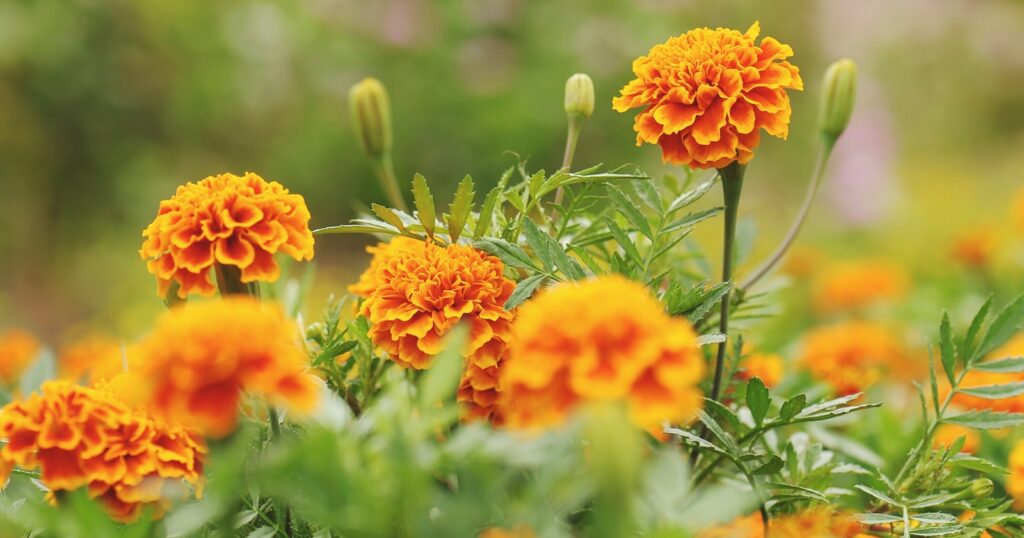
Marigolds are incredibly easy to grow and maintain. They aren’t fussy about soil conditions or location; all they really need to thrive is plenty of sun! They bloom in the early spring and the flowers will stick around until first frost.
If you’re planting marigolds in your vegetable garden, the soil should already be rich with organic material, loamy, and well draining. Your vegetables certainly need good soil to grow and produce fruit!
But if you’re planting your marigolds near established vegetable beds, rest assured that they’ll be fine growing in clay, sandy soil, or in soil that is pretty depleted of nutrients (e.g. in an area that supported nutrient hungry vegetables last season).
If you live in a hot climate, you’ll also be happy to know that marigolds are pretty drought tolerant. With that said, they’ll produce more flowers if they’re regularly watered, which shouldn’t be an issue if they’re planted with your veggies.
Create Biodiversity in Your Garden
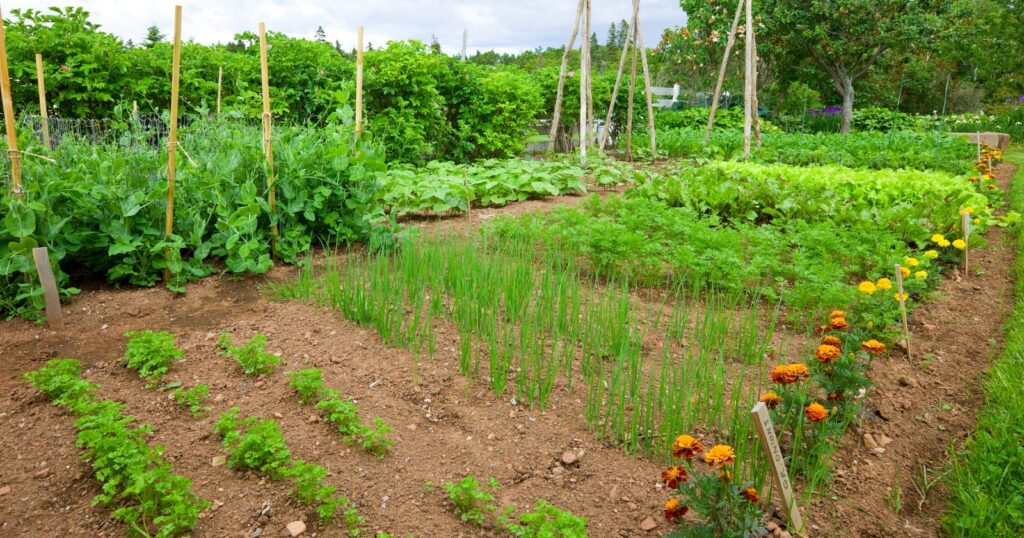
I learned about companion planting and the importance of biodiversity helping my mom build and maintain a hobby farm in central Texas. During that process, my early vision of what a garden should look like – neat, sterile rows of single vegetable types – was dashed as I began to see the importance and real benefits that diversity brings to a vegetable garden.
Every ecosystem works in harmony and no elements can work in isolation from those around it. Therefore, the more plants, animals, and beneficial insects there are in your garden, the more resilient it will be. If you choose to garden organically, this is incredibly important.
Marigolds are one of the flowering plants that can help in so many ways. They attract bees and butterflies to help pollinate your vegetables, attract predatory insects that love to eat the pests that may plague you, and ‘trap’ certain types of pests so they leave your veggies alone.
The bottom line is that a vegetable garden with strong biodiversity is a healthy one that produces an abundance of produce!
Protect Against Harmful Nematodes
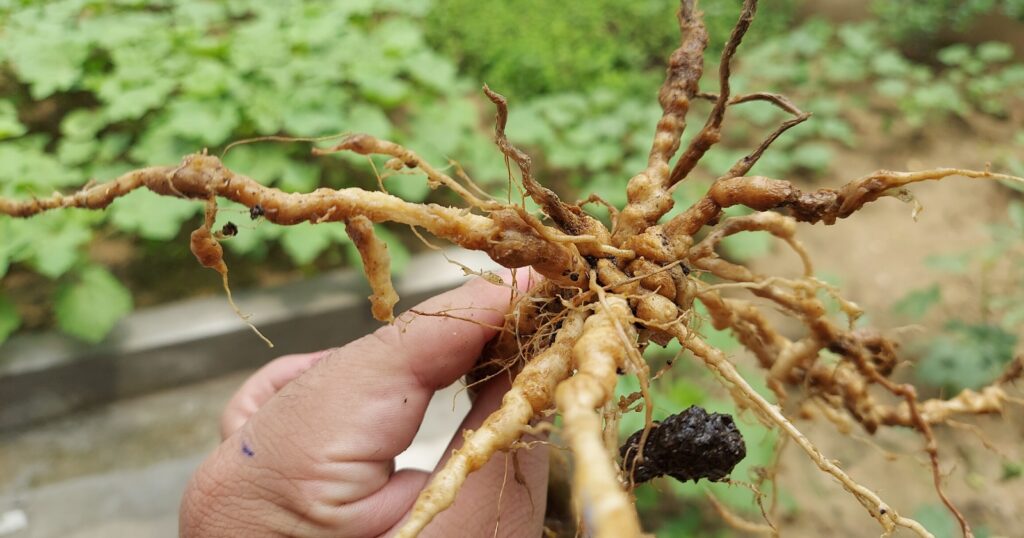
Nematodes are tiny roundworms that have been reported on every continent on earth (even Antarctica!). They can be found in deserts, swamps, oceans, the tropics, and – of course – your garden. Nematodes are mostly invisible to us since they are microscopic and largely transparent.
Although there are millions of different species, only a few thousand have been named. Some are considered beneficial but many are harmful to our vegetable garden.
There is some debate on whether or not marigolds can really help with a nematode problem. Like many natural remedies, I believe it’s a matter of perspective and expectation. Are marigolds going to kill or deter every nematode in your garden? Unlikely… Can they have a positive effect on reducing numbers and damage in localized areas? Yes, I believe so.
Marigolds produce compounds in their roots called alpha-terthienyl that seep from the roots into the surrounding soil. Over a 3-4 month period, this toxin can bring harmful nematode populations down in a specific area and deter any new infestations.
Tangerine, Petite Gold, Petite Harmony, Goldie, and Nemagold are all varieties thought to be the most effective at impacting nematodes.
Marigolds will be most effective at reducing nematode populations when planted closely together. They will also need time to mature enough to actually be capable of producing the chemicals previously referenced. If you know you have a nematode problem, consider planting clusters of marigolds in problem areas early in the season.
Attract Pollinators
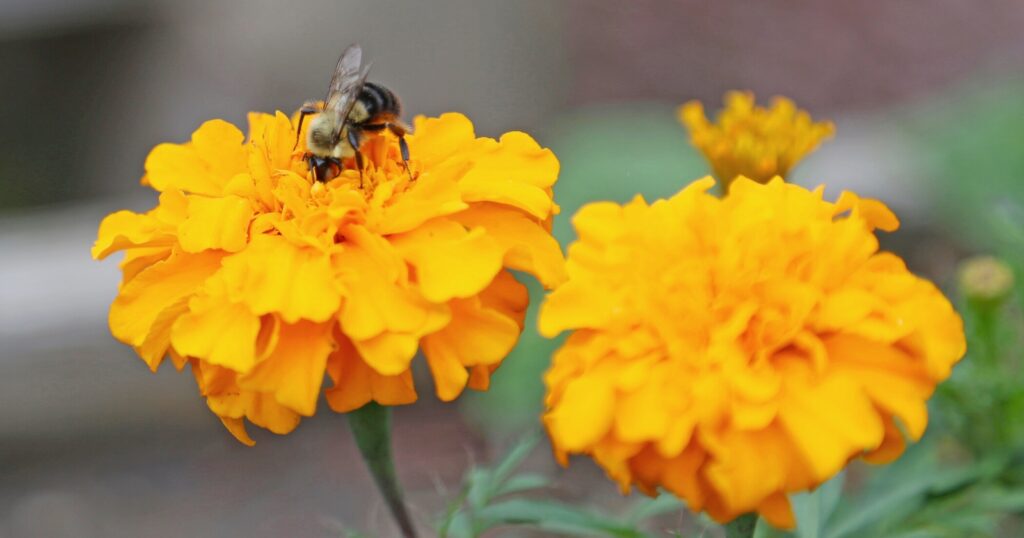
The benefits of pollinators to your vegetable garden cannot be overstated, and marigolds do a great job of attracting them to your space. And the good news is that, once the pollinators are in your garden, they will be far more inclined to help pollinate your other vegetables as well.
While some vegetables like tomatoes and peppers are self pollinating, other vegetables like squash, cucumbers, and eggplant are not. They require pollinators to move pollen between the male and female flowers. Without them, your vegetables will produce beautiful flowers but no fruit.
I actually had to hand pollinate my squash plants with a small paint brush in my first garden because we had no pollinators around (if you’ve read any of my other articles, you know I’ve made ALL the gardening mistakes!). Today, we have a section of our garden specifically dedicated to pollinators. Because they know to come to our space, all of our other veggies and fruiting bushes share in the love!
Pro Tip: Bees prefer the single-bloom varieties of marigolds over the double-blooms varieties. So make sure to plant these amongst double-blooms if you prefer those.
Attract Butterflies
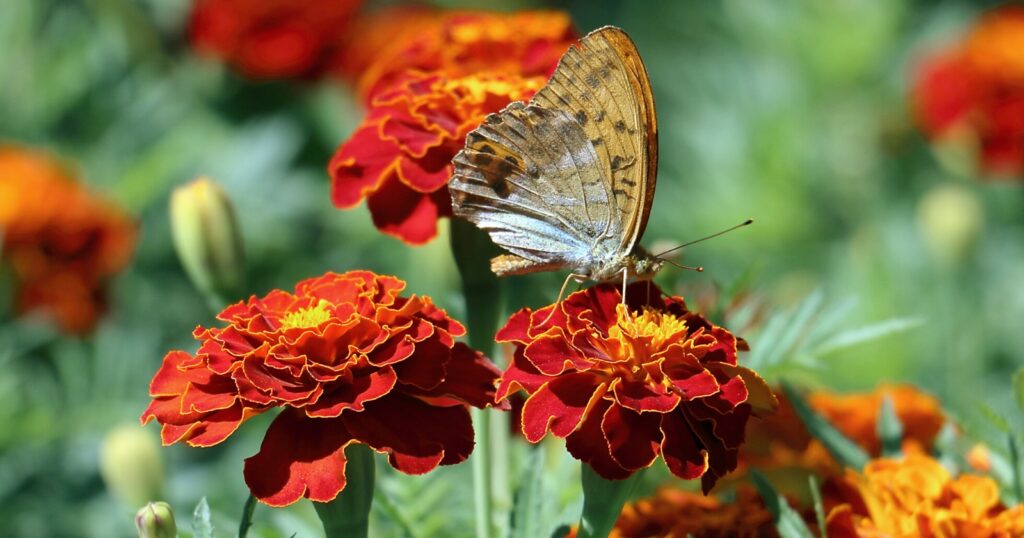
Butterflies are also very attracted to the yellow and oranges of French marigolds. Because of the size of the blooms, they can sit comfortably and sip nectar from the flower’s many florets. Just like with pollinators, butterflies will prefer the single-bloom marigold varieties since it is easier for them to get to the nectar.
There is something special about seeing butterflies in your garden, and if you have kids, they will be delighted to see them too!
Attract Predatory Insects
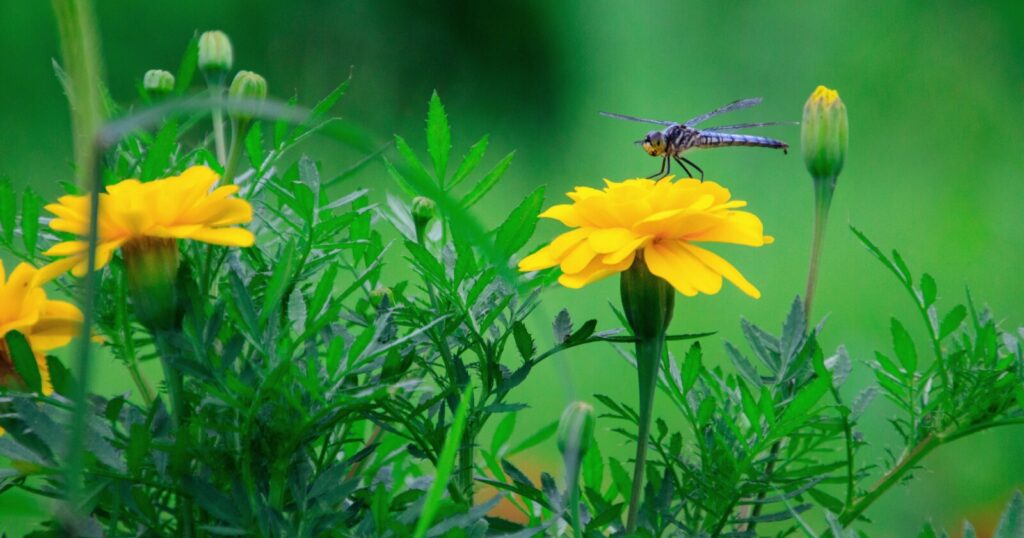
In my experience, natural predatory insects are the best defense against pests. Ladybugs, parasitic wasps, hoverflies, lacewings, and dragonflies all love to feast on the bugs that want to feast on your vegetables. Invite them into your garden by planting marigolds!
The sweet nectar in the flowers attracts all of these beneficial predatory insects in addition to the pollinators we just talked about. And once they’re in your garden, they will naturally turn to the other things they love to eat – pests. Your vegetables will thank you for creating an inviting home for the good kind of insects!
An Effective Trap Crop for Some Pests
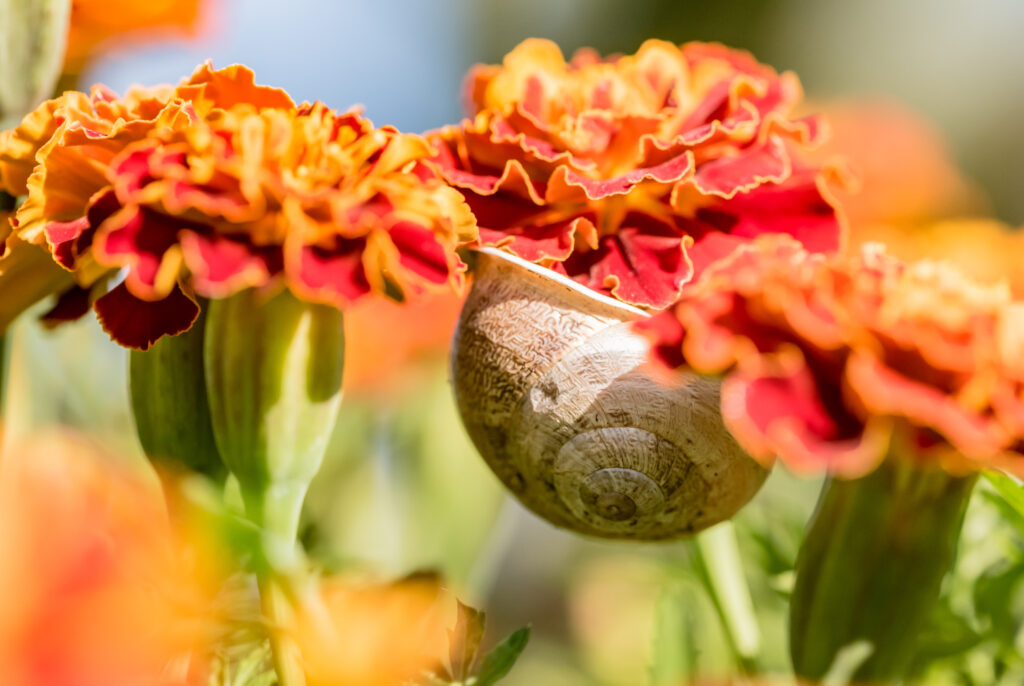
When space is at a premium in your garden, it’s helpful to know that the flowers you plant serve multiple purposes. Another interesting benefit that marigolds bring to your garden is that they ‘trap’ certain pests so they don’t bother your vegetables.
Slugs, for example, love marigolds. If your garden is prone to slug problems, consider planting a ring of ‘sacrificial’ marigolds around the edges of your garden bed.
The slugs will be drawn to the marigolds and leave your other vegetables alone. Be sure to check the flowers each day to pick off slugs and put them in a jar of soapy water. You may lose some marigold plants in the process, but they will have served their purpose!
Pro Tip: Make sure you plant your marigolds several weeks ahead of your vegetable crop to allow them to mature enough to attract pests.
Spider mites are another pest that really seem to love marigolds. These tiny arachnids infest in very large groups, settling on the undersides of leaves. You will know this is the pest you’re dealing with if you see delicate webbing around leaves and stems. Spider mites also love tomato plants, so if you can trap them on your marigolds, your tomatoes will thank you!
Repel Some Pests
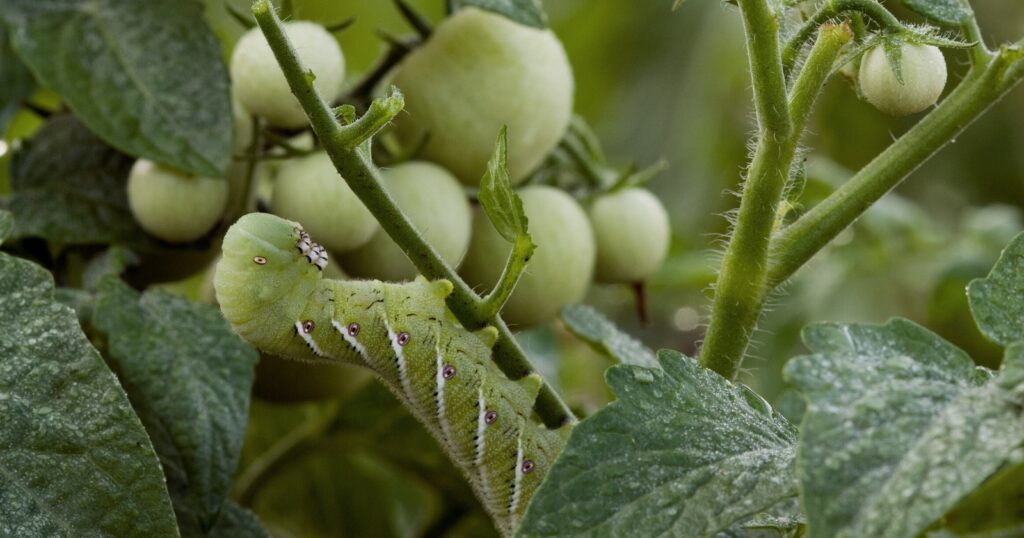
Mature marigolds are pretty effective at confusing certain pests. Marigolds have a very strong scent and it can actually mask the scent of many of your vegetables, making them virtually invisible to insects like tomato hornworms, cabbage moths, and beetles. There is also some evidence that marigolds secrete certain compounds that repel other pests like aphids and whiteflies.
With that said, companion planting for pest control is not an all-in-one solution, so don’t be disappointed if you still deal with a small number of pests even after planting marigolds. Organic gardening and natural pest reduction is a multi-pronged approach and you must stay vigilant to get ahead of any problems.
To give yourself the best chance at masking your vegetables, marigolds will need to be planted several weeks ahead of your vegetables so they have enough time to flower. You will still need to be in your garden every day to look for signs of pest infestation, but marigolds will definitely give you a leg up.
Repels Mosquitoes
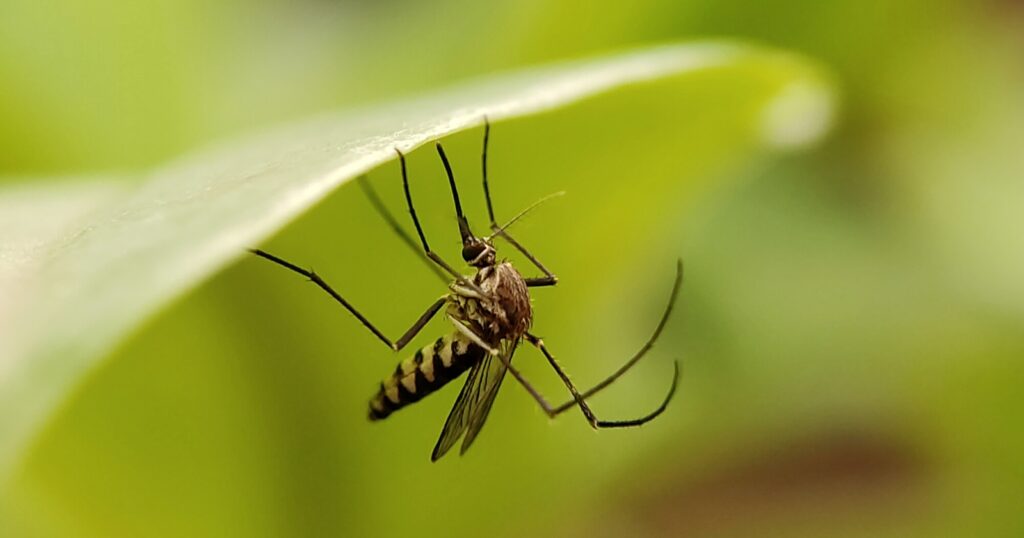
Mosquitoes are the only part of summer that I don’t care for. I tend to develop large itchy welts when I get bitten so I have become pretty creative in how I protect myself. As an organic gardener, I was delighted to discover that marigolds can help keep mosquitoes out of your garden!
Marigolds give off volatile insecticides, which is used in many organic insect repellents. If you want to use the flowers to repel mosquitoes, plant them throughout your vegetable garden and near open windows and doors where the bugs may enter.
You can also keep potted marigolds on tables and near benches where you like to sit outdoors. This isn’t a 100% cure all for your mosquito problems, but it will be about as effective as a good citronella candle.
There have also been studies on using marigold essential oils to kill mosquito larvae and prevent them from maturing into adults. This kind of research is being led in places like India where mosquito-borne malaria is prevalent. It always amazes me just how interesting this flower is.
Makes Excellent Compost at the End of the Growing Season
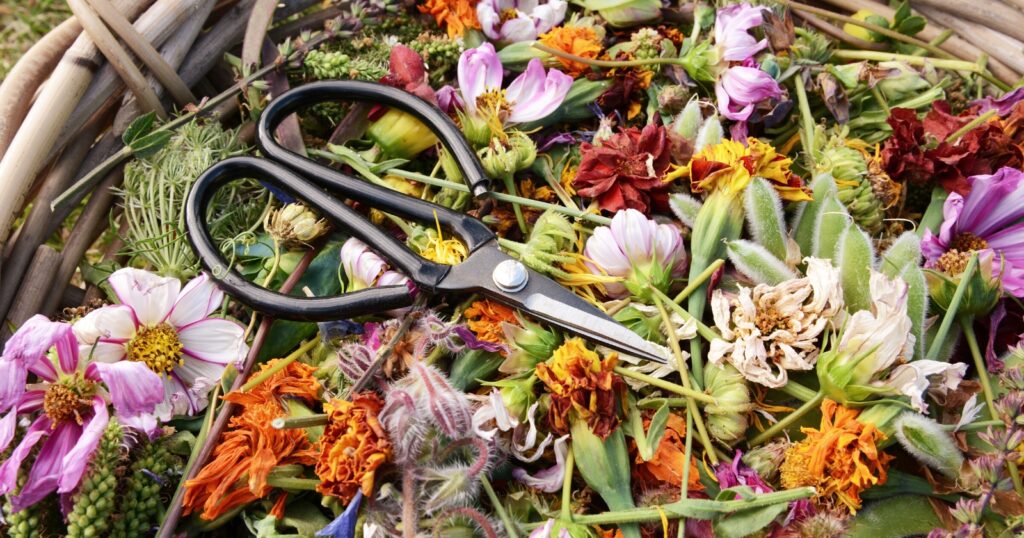
Remember when we talked about nematodes earlier in this article? We learned that many nematodes are bad for our garden and that mature marigolds can help kill and deter future nematode infestations.
The interesting thing is that, while nematodes are bad for our garden, they’re really important in a compost pile. Nematodes are actually one of the biggest contributors to compost decomposition, breaking down incredible amounts of bacteria into a usable soil amendment.
If you put newly pulled marigolds into your compost pile, their roots will continue to secret the chemical that kills nematode populations.
Thankfully, it’s safe to add dead marigolds to your compost pile or vermiculture bin. To make sure your marigolds are safe and toxin free, pull your marigolds at the end of the season and allow them to sit in the sun for a few days.
The UV light from the sun will deactivate the toxin in the roots and make them safe for your compost pile. They will now benefit your compost like any other plant addition and add vital nutrients back into your soil!
Can Suppress Weeds
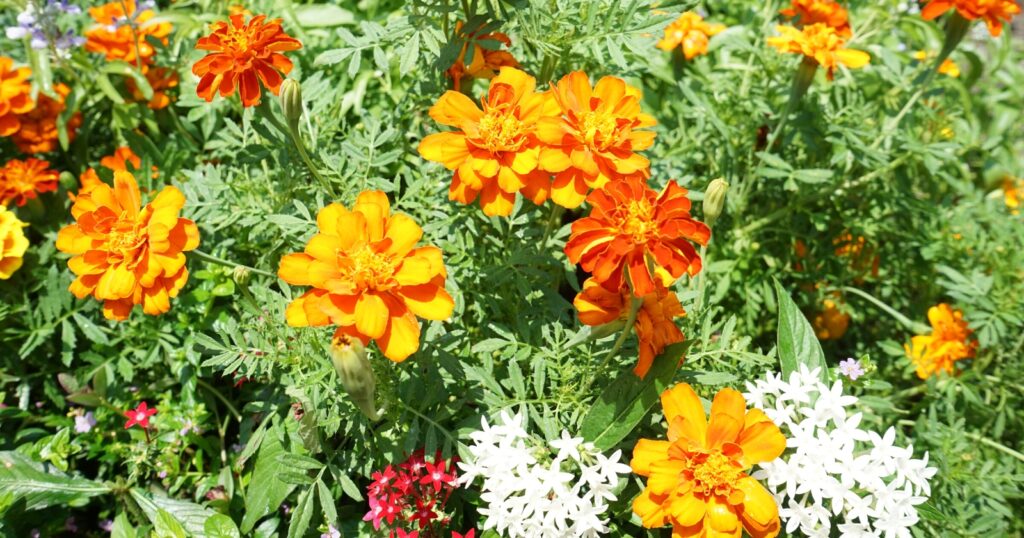
Weeds are the bane of farmers and home gardeners alike. They seemingly pop up overnight and greedily suck up the vital nutrients our vegetables need.
You can use a number of different plants to help suppress weeds. Cover crops like peas and beans can block out weeds while also adding nitrogen back into the soil. Herbs are a great option as well, and many even improve the flavor or vigor of a plant. And of course, marigolds do a great job of suppressing weeds too!
The compact bushing nature of French marigolds make them a perfect example of a ‘working flower’. Plant several marigolds along with herbs around your vegetable garden and you’ll not only suppress weeds, you’ll attract pollinators, and keep your vegetables healthy!
Adds Visual Interest to Your Garden
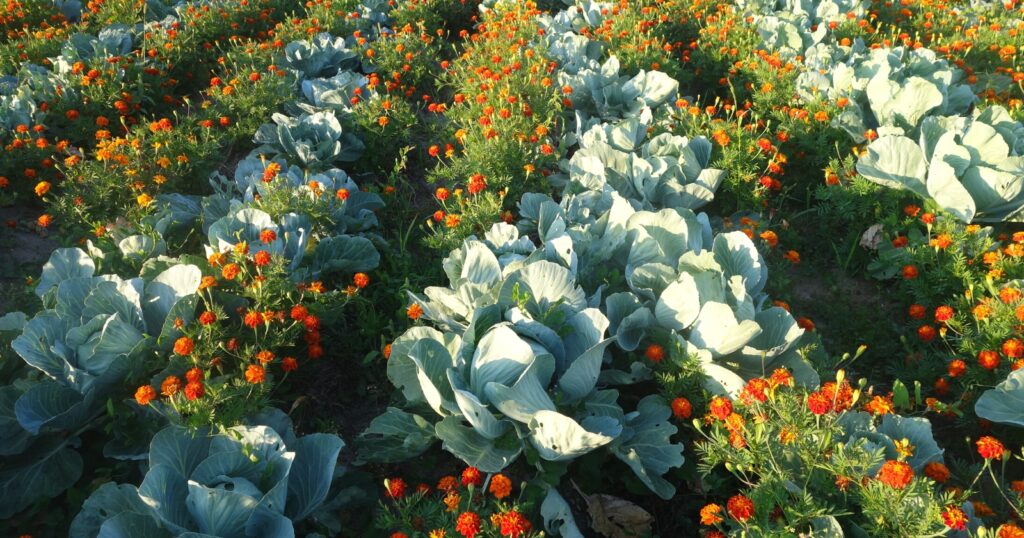
A vegetable garden doesn’t have to be all business. I, for one, enjoy being in my garden more frequently when it’s visually beautiful. Variations on height, color, and plant type can add immense appeal.
Gone are the days of sterile rows of singular plants! Instead, we can choose to add vibrant spots of color to our vegetable gardens and plant in a way that encourages natural biodiversity.
Marigolds have to be one of the most cheerful flowers to have in your garden. The bright ruffled yellow, orange, and red flowers contrast beautifully with the deep green leaves of most vegetable plants.
My recommendation is to plant them in small groups throughout your garden. They look amazing clustered together (even small ones!) and can really help fill in the space between other plants.
Beautiful Cut Display Flower
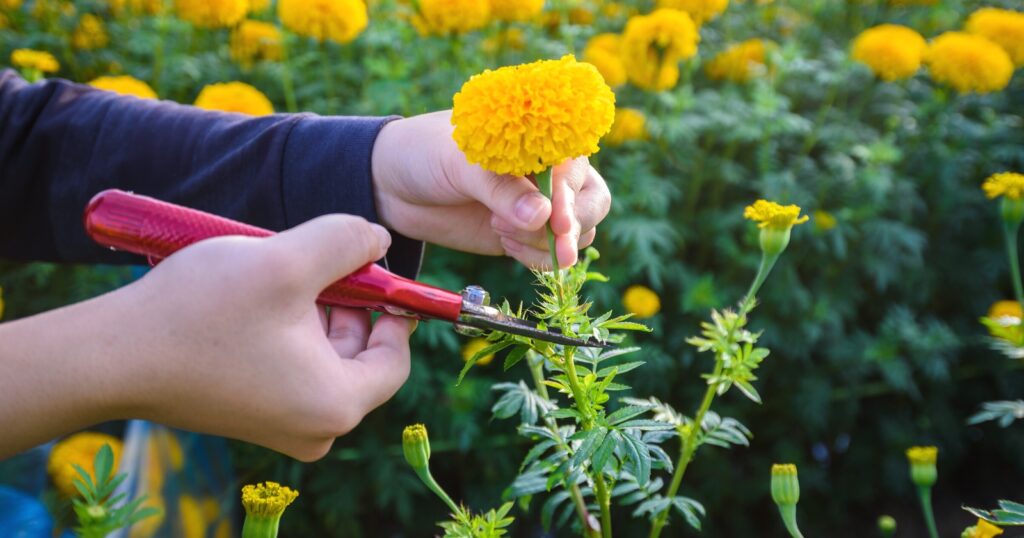
Marigolds have beautiful flowers. They not only look amazing outside in our gardens, they are quite beautiful inside as well! While African marigolds make a dramatic cut flower due to their size, French marigolds make a beautiful display in shorter vases. Because they bloom so prolifically all season, you can create bright, cheerful displays in your home all season!
Wrap Up
After reading this article, my hope is that you’re excited and ready to plant marigolds in your vegetable garden this year! It’s hard not to love a flower that deters pests, attracts pollinators, hardly needs any care, and will provide you with color galore all season long. It’s an obvious choice – happy planting!

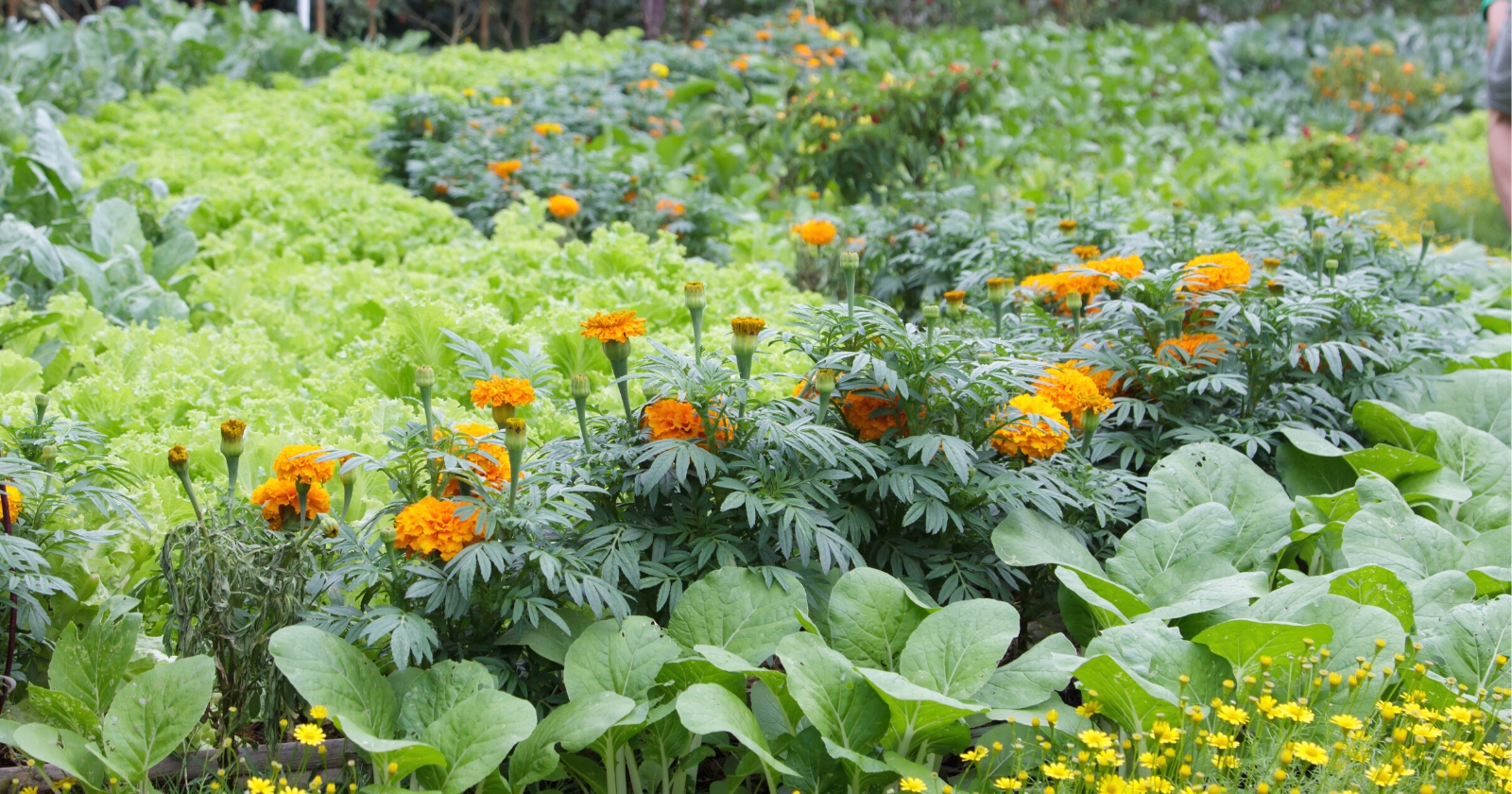
Leave a comment